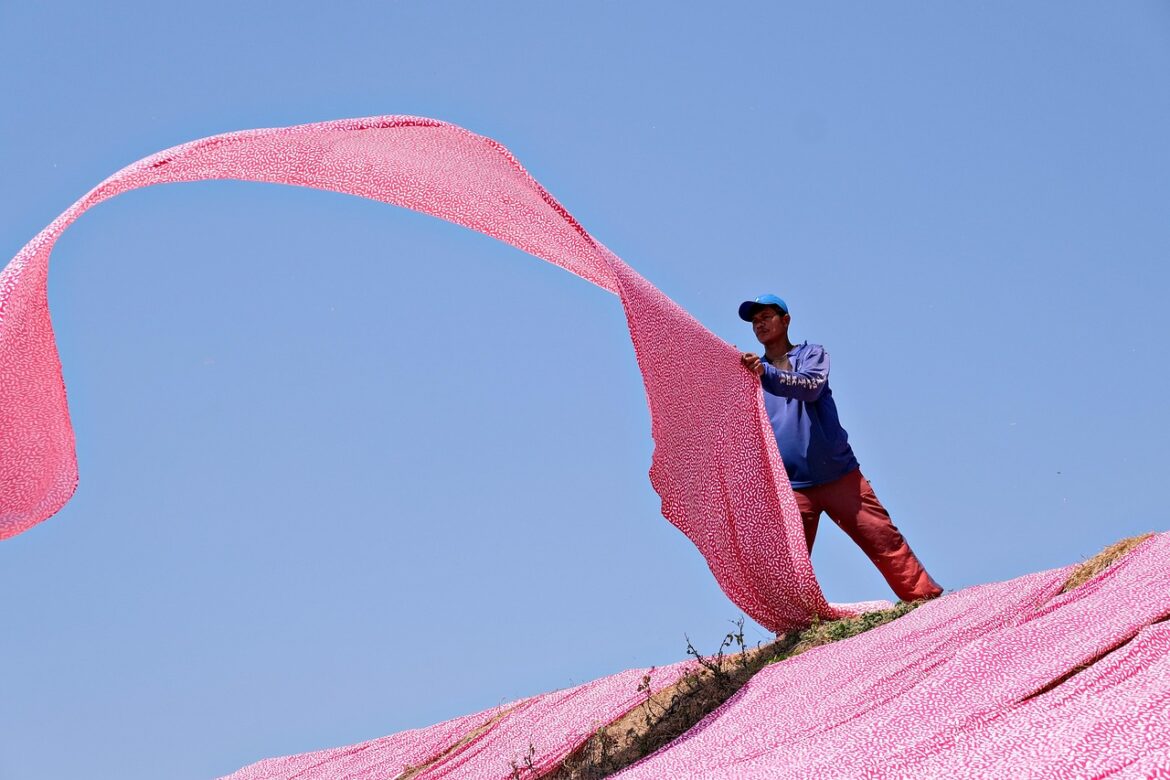Imagine a world where your favorite tank top’s journey—from cotton field to closet—is as traceable as your morning coffee beans. That’s the reality unfolding in 2025’s fashion supply chains, where global disruptions meet grassroots ingenuity. Here’s how the industry is stitching together solutions.
The Return of ‘Made in the USA’ (For Real This Time)
American factories are buzzing again. Brands battered by overseas shipping delays and human rights concerns are relocating production to U.S. soil. Take Los Angeles’ denim workshops, now running triple shifts to meet demand for $200 ethically made jeans. It’s not just patriotism driving this shift—new AI-driven looms can now produce small batches profitably, letting brands react to TikTok trends within days rather than months[^1^].
Farm to Fashion: The 5F Revolution
Gujarat, India recently hosted a game-changing event where cotton farmers brainstormed with Gucci’s fabric engineers. The ‘Farm to Fashion 2025’ expo spotlights every step of the process—Farm (organic cotton), Fibre (recycled polyester from plastic waste), Fabric (self-cooling smart textiles), Fashion (zero-waste pattern cutting), and Future (carbon-negative dye tech). One standout? A startup making lab-grown silk that spares silkworms[^2^].
The Tariff Tug-of-War
When U.S. tariffs on Vietnamese garments hit 46% overnight, fast-fashion giants faced a nightmare. Workers in Dhaka halfway houses (temporary housing for factory migrants) now face uncertainty as brands scramble to reroute production. But there’s a silver lining: the crisis forced brands like Reformation to double down on their U.S. vertical supply chain, slashing tariff exposure[^3^].
TikTok’s Surprising Role in Inventory Control
How does a three-piece collection sell out in 4 hours without overproduction? Viral styling videos. One London-based label released a single convertible dress with 12 styling hacks (#MagicDressChallenge), using pre-order data to produce exactly 1,237 units. No waste, no markdowns—just pure algorithmic precision meeting Gen Z’s FOMO[^4^].
The “Who Made This?” App
Blockchain isn’t just for crypto bros anymore. Scan a QR code on your new blazer and meet Lakshmi from Chennai, who stitched the sleeves using solar-powered sewing machines. This level of transparency is becoming table stakes for brands like Patagonia and Stella McCartney, turning supply chain liabilities into marketing gold[^5^].
The Takeaway? 2025’s supply chains aren’t just moving faster—they’re thinking smarter. Whether it’s AI forecasting or empowering consumers to vote with their wallets, the thread connecting these stories is clear: agility beats scale in today’s fashion landscape.
References:
- https://anuprerna.com/blogs/fabric-innovations-for-autumn-winter-fashion-forecasting-2025-what-to-expect/1860232
- https://industrywired.com/fashion-industry/reshoring-in-fashion-the-growth-of-local-us-clothing-production-9012090
- https://www.whowhatwear.com/fashion/trends/spring-summer-2025-fashion-trends
- https://www.fibre2fashion.com/news/textile-news/farm-to-fashion-2025-to-spotlight-sustainability-5f-textile-ecosystem-302237-newsdetails.htm
- https://www.globenewswire.com/news-release/2025/04/28/3069552/0/en/Apparel-Logistics-Strategic-Business-Report-and-Tariff-Impact-Analysis-2025-Analysis-of-Cost-and-Supply-Chain-Implications-by-Sourcing-and-Trade-Exposure.html
- https://bhr.stern.nyu.edu/quick-take/global-clothing-companies-need-to-protect-workers-as-a-trade-war-looms/
- https://www.queens.edu/internships/wp-content/uploads/sites/21/2025/04/CareerDevelopmentGuide2022a.pdf
- https://fablstyle.com/launching-successful-fashion-line-2025/



